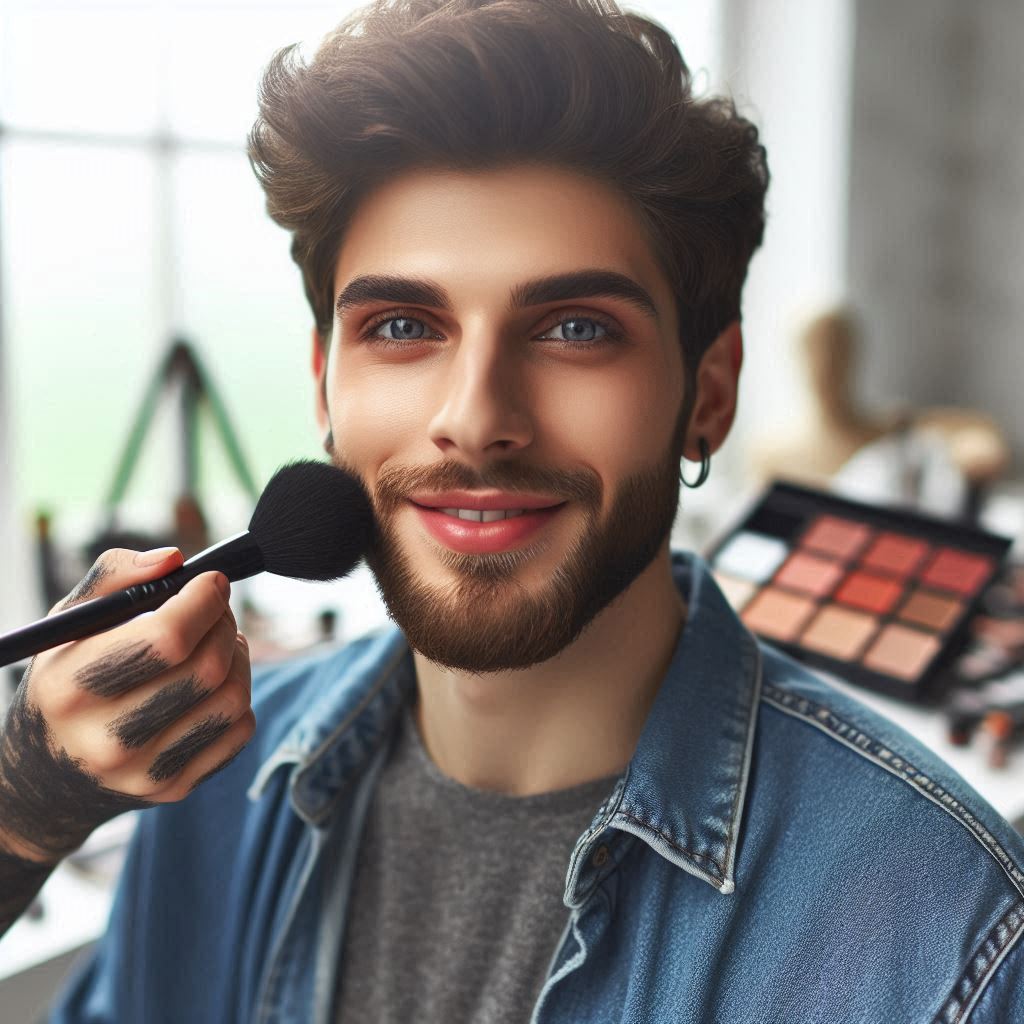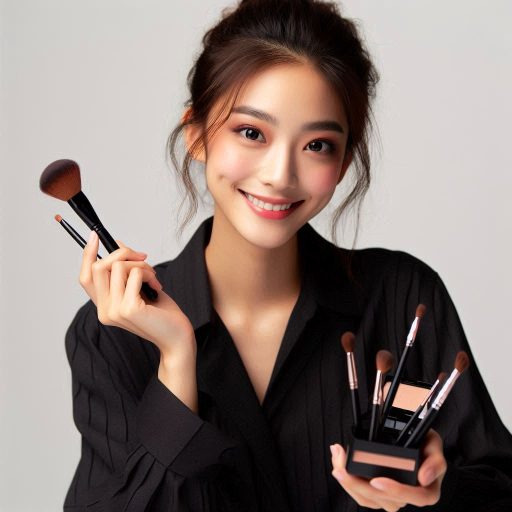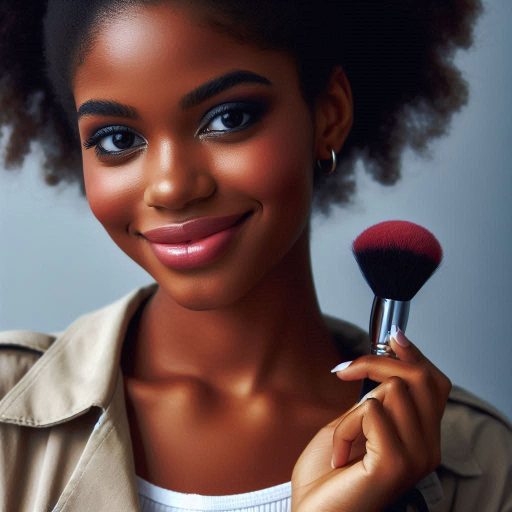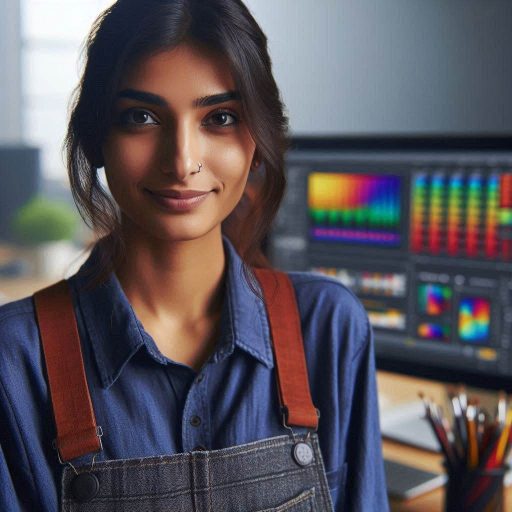Introduction
Makeup plays a crucial role in our society, enhancing beauty and boosting confidence.
There are various aspects to makeup artistry, including face shape analysis and color theory.
Professional makeup artists create stunning looks for different occasions using their expertise.
Makeup design involves creating unique looks by combining colors, textures, and techniques.
Artistic skills are essential in designing makeup to achieve desired effects and outcomes.
Makeup is a powerful tool for self-expression, allowing individuals to showcase their creativity.
By experimenting with different makeup styles, people can convey their personalities and emotions.
History of Makeup Art and Design
The origins of makeup and how it has evolved over the years
Makeup has a long and storied history, with evidence of its use dating back to ancient civilizations.
In ancient Egypt, for example, both men and women wore makeup as part of their daily grooming rituals.
They used natural pigments like ochre and malachite to adorn their faces, believing that it had magical and protective properties.
Cultural significance of makeup in different societies
Throughout history, makeup has been used not only for cosmetic purposes but also to symbolize status, wealth, and cultural identity.
In many societies, certain makeup styles were reserved for royalty or special occasions, while others were more widely worn as a form of self-expression.
Key moments in history that have influenced makeup trends
Key moments in history have had a significant impact on makeup trends.
For instance, the rise of cinema in the early 20th century led to the popularization of red lipstick, as actresses like Marilyn Monroe and Elizabeth Taylor made it a fashion statement.
Similarly, the punk movement of the 1970s brought bold, edgy makeup looks into the mainstream, inspiring a generation of rebels and creatives.
Today, makeup continues to evolve and adapt to changing tastes and trends.
With the advent of social media and beauty influencers, new makeup styles and techniques are being shared and celebrated on a global scale.
Makeup has become an art form in its own right, with artists pushing boundaries and challenging conventional beauty standards.
Read: Working as a Makeup Artist in a Post-Pandemic World
Different Types of Makeup Products
Different makeup products
Foundation is used to create an even base for makeup application, covering imperfections and providing a smooth canvas.
Transform Your Career Today
Unlock a personalized career strategy that drives real results. Get tailored advice and a roadmap designed just for you.
Start NowEyeshadow adds color and dimension to the eyelids, enhancing the eyes and creating different looks depending on the colors used.
Lipstick is used to add color and definition to the lips, completing the overall makeup look and adding a pop of color.
Application of Makeup Products
Foundation is typically applied with a brush or sponge, blending it evenly into the skin for a seamless finish.
Eyeshadow can be applied with brushes or fingertips, blending different shades to create depth and dimension on the eyelids.
Lipstick can be applied directly from the tube or with a lip brush, ensuring precise application and full coverage on the lips.
Choosing the Right Products
It is crucial to choose makeup products that cater to individual skin types, ensuring a flawless finish and preventing any skin reactions.
For oily skin, it is important to opt for matte foundations and oil-free products to control shine and prevent breakouts.
Dry skin requires hydrating foundations and cream-based products to prevent flakiness and provide a dewy complexion.
Sensitive skin types should opt for hypoallergenic and fragrance-free products to avoid irritation and allergic reactions.
Choosing the right products for your skin type will not only enhance the overall makeup look but also promote healthy skin in the long run.
Techniques and Tools of Makeup Application
Makeup application is both an art and a science.
Mastering various techniques and using the right tools can elevate your makeup game significantly.
Various techniques used in makeup application
Contouring sculpts the face by creating shadows and highlights.
Apply a darker shade to areas where shadows naturally fall, like under the cheekbones.
Use a lighter shade to accentuate the high points, such as the cheekbones and brow bones.
Highlighting adds a radiant glow to the skin.
Focus on the high points of your face, such as the tops of the cheekbones, the bridge of the nose, and the cupid’s bow.
This technique enhances your natural features and creates a luminous finish.
Blending is essential for a seamless look.
Whether you‘re blending foundation, eyeshadow, or blush, use a clean brush or sponge to ensure there are no harsh lines.
Transform Your Career Today
Unlock a personalized career strategy that drives real results. Get tailored advice and a roadmap designed just for you.
Start NowProper blending helps achieve a flawless, natural appearance.
Different tools needed for makeup application
Brushes come in various shapes and sizes, each designed for a specific purpose.
Foundation brushes, blending brushes, and angled brushes all have unique functions.
Choose brushes made from quality materials for the best results.
Sponges are versatile tools used for applying and blending foundation, concealer, and other products.
They provide an even application and can be used wet or dry depending on the desired finish.
A damp sponge offers a more dewy look.
Beauty blenders are sponges shaped to reach various facial contours.
Their unique design helps with precise application and blending.
Using a beauty blender can enhance the overall finish of your makeup.
Tips and tricks for achieving different makeup looks
Start with a primer to create a smooth base for your makeup.
It helps products adhere better and last longer.
Use a setting spray to lock in your makeup and keep it looking fresh throughout the day.
Experiment with different brushes and techniques to find what works best for you.
Clean your tools regularly to maintain their effectiveness and hygiene.
Practice makes perfect, so take the time to master each technique and tool.
Read: Interview with a Leading Special Effects Artist
Understanding Color Theory in Makeup
Color theory plays a crucial role in the art and design of makeup.
Understanding how colors work together can help enhance the overall look and achieve stunning results.
Basic Concepts of Color Theory
Color theory is the understanding of how colors interact with each other.
Transform Your Career Today
Unlock a personalized career strategy that drives real results. Get tailored advice and a roadmap designed just for you.
Start NowIt consists of primary colors (red, blue, yellow), secondary colors (orange, green, purple), and tertiary colors.
Colors can be warm (yellows, oranges, reds) or cool (blues, greens, purples).
Understanding the color wheel is essential for creating balanced and cohesive makeup looks.
Choosing the Right Colors for Different Skin Tones
- For fair skin tones, light and pastel shades tend to work best.
- Medium skin tones can play with a wider range of colors, from soft neutrals to bold hues.
- Deep skin tones look stunning with rich jewel tones and vibrant shades.
- Consider undertones (cool, warm, neutral) when choosing makeup colors for a perfect match.
Choosing the Right Colors for Different Eye Colors
- Blue eyes pop with warm shades like peach, copper, and gold.
- Green eyes are complemented by purples, plums, and earthy tones.
- Brown eyes look gorgeous with almost any color, but especially with blues, greens, and bronzes.
- Hazel eyes can pull off a variety of colors, including warm browns, greens, and burgundies.
Using Complementary Colors for Harmonious Looks
- Complementary colors are opposite each other on the color wheel.
- When used together, complementary colors create a striking contrast.
- For example, purple eyeshadow can make green eyes pop, as purple is opposite green on the color wheel.
- Experiment with complementary colors to create dynamic and eye-catching makeup looks.
Understanding color theory in makeup is a valuable skill that can elevate your artistry and help you create stunning and cohesive makeup looks.
By choosing the right colors for different skin tones and eye colors, and experimenting with complementary colors, you can unleash your creativity and achieve beautiful results.
Read: Networking Strategies for Makeup Artists

Makeup Trends and Styles
Current makeup trends and popular styles
When it comes to makeup, staying up-to-date with the latest trends and styles is essential.
Makeup trends are constantly evolving, influenced by various factors such as social media, celebrities, and runway shows.
One of the current makeup trends that has been gaining popularity is the natural, minimalistic look.
This trend focuses on enhancing natural features while keeping the makeup subtle and understated.
Neutral tones, dewy skin, and lightly defined brows are key elements of this style.
Another trend that has been making waves is the bold and colorful makeup look.
Vibrant eyeshadows, bright lipsticks, and graphic liners are all part of this trend, allowing for creative and eye-catching looks.
Influenced by runway shows and avant-garde makeup artists, this style is perfect for those who love to experiment with bold colors.
How makeup trends are influenced by social media, celebrities, and runway shows
Social media platforms like Instagram and TikTok play a significant role in shaping makeup trends.
Beauty influencers and makeup artists often showcase their creations on these platforms, inspiring millions of followers to try out new looks.
From viral makeup challenges to product reviews, social media is a hub for all things beauty-related.
Celebrities also have a major influence on makeup trends.
Red carpet events, music videos, and fashion campaigns often set the stage for new makeup styles to emerge.
Fans look to their favorite celebrities for inspiration, whether it’s a glamorous evening look or a fresh-faced daytime makeup routine.
Transform Your Career Today
Unlock a personalized career strategy that drives real results. Get tailored advice and a roadmap designed just for you.
Start NowRunway shows are another key source of inspiration for makeup trends.
Fashion designers collaborate with makeup artists to create striking looks that complement their collections.
From avant-garde creations to classic beauty looks, runway makeup sets the tone for what’s in vogue each season.
How to incorporate trends into everyday makeup looks
To incorporate current makeup trends into your everyday looks, start by experimenting with new techniques and products.
Try adding a pop of color to your usual makeup routine or playing with different textures and finishes.
Don’t be afraid to step out of your comfort zone and try something bold and unexpected.
Consider investing in versatile makeup products that can help you achieve a variety of looks.
A multi-use palette with a range of shades, a long-lasting lipstick in a bold color, and a quality mascara can be staples in your makeup collection.
Remember, makeup is all about expressing your creativity and individuality, so have fun with it!
In general, makeup trends and styles are ever-changing, influenced by a variety of factors such as social media, celebrities, and runway shows.
By staying informed and experimenting with different looks, you can find the perfect style that reflects your unique personality and sense of beauty.
Embrace the trends, but don’t forget to make them your own.
Read: SFX Makeup Courses and Certifications Online
Makeup for Different Occasions
When it comes to makeup, one size does not fit all.
Different occasions call for different makeup looks to suit the tone of the event and complement your outfit.
Here’s how you can adapt your makeup for various occasions:
Importance of Adapting Makeup Looks
Adapting makeup for different occasions is crucial as it helps you look appropriate and enhances your overall appearance.
Each event has its own vibe and theme, so your makeup should reflect that to make you feel confident and put together.
Whether it’s a wedding, party, or work event, adapting your makeup can make all the difference in how you are perceived.
Achieving Natural Daytime Look vs. Glam Nighttime Look
For a natural daytime look, opt for lighter shades of foundation, blush, and eyeshadow to create a fresh and effortless appearance.
Transform Your Career Today
Unlock a personalized career strategy that drives real results. Get tailored advice and a roadmap designed just for you.
Start NowFocus on enhancing your features with minimal makeup, such as a light coat of mascara and a nude lipstick.
For a glam nighttime look, go for bolder makeup choices like a smokey eye, statement lip color, and defined cheekbones for a more dramatic effect.
Play with shimmer and glitter to add a touch of sparkle that will make you stand out in the evening.
Choosing Appropriate Makeup Looks for Specific Events
When attending a wedding, opt for a romantic and soft makeup look with pinks and corals to complement the festive atmosphere.
For a party, experiment with bold colors and metallic finishes to create a fun and playful makeup look that matches the celebratory mood.
At work events, keep your makeup professional and polished with neutral shades and a subtle cat-eye or red lip for a touch of sophistication.
By adapting your makeup looks to different occasions, you can showcase your creativity and style while also ensuring that you look your best for every event.
Remember to consider the theme and dress code of the occasion when choosing your makeup to create a cohesive and harmonious overall look.
Delve into the Subject: Creative Director Tips for Effective Brainstorming
Makeup as a Form of Self-Expression
Makeup is more than just enhancing one’s physical appearance; it serves as a powerful form of self-expression.
How makeup can be used as a tool for self-expression and creativity
Makeup allows individuals to showcase their creativity and personality through different styles and techniques.
From bold and vibrant looks to subtle and natural makeup, people can express their mood and emotions through their choice of makeup.
Experimenting with makeup colors, textures, and application techniques enables individuals to unleash their artistic side and communicate their unique identity.
Boosting Confidence and Empowerment
Applying makeup can boost one’s confidence by enhancing features and creating a sense of empowerment.
For many individuals, makeup serves as a form of self-care and self-love, allowing them to feel good about themselves and embrace their beauty.
Feeling confident in one’s appearance can have a positive impact on overall self-esteem and how individuals perceive themselves in society.
Makeup as a Form of Art and Self-Discovery
Many individuals view makeup not just as a daily routine but as a form of art and self-discovery.
Exploring different makeup looks and techniques can lead to a deeper understanding of one’s preferences, style, and personal identity.
Some people use makeup as a way to express their emotions, tell stories, and even challenge societal norms through creative and unconventional makeup looks.
In a nutshell, makeup holds immense potential as a tool for self-expression, boosting confidence, and exploring one’s creativity and identity.
Transform Your Career Today
Unlock a personalized career strategy that drives real results. Get tailored advice and a roadmap designed just for you.
Start NowBy embracing the art and design of makeup, individuals can truly showcase their inner beauty and unique essence to the world.
Conclusion
Understanding the art and design of makeup is crucial for anyone interested in the beauty industry.
It involves color theory, facial anatomy, and creative expression.
By mastering these concepts, makeup artists can effectively enhance natural beauty, create stunning looks, and push boundaries in the industry.
It is an art form that combines technical skill with artistic flair.
Experimenting with different techniques, products, and styles allows individuals to unleash their creativity and discover their unique aesthetic.
Makeup is a powerful tool for self-expression and boosting confidence.
Overall, embracing the art and design of makeup opens up endless possibilities for creating one-of-a-kind looks and expressing personal style.
It is a form of art that continues to evolve and inspire new trends.
Therefore, I encourage readers to explore the world of makeup, experiment with different products, colors, and techniques, and most importantly, have fun while doing it.
Embrace your creativity and let makeup be your canvas for self-expression.




